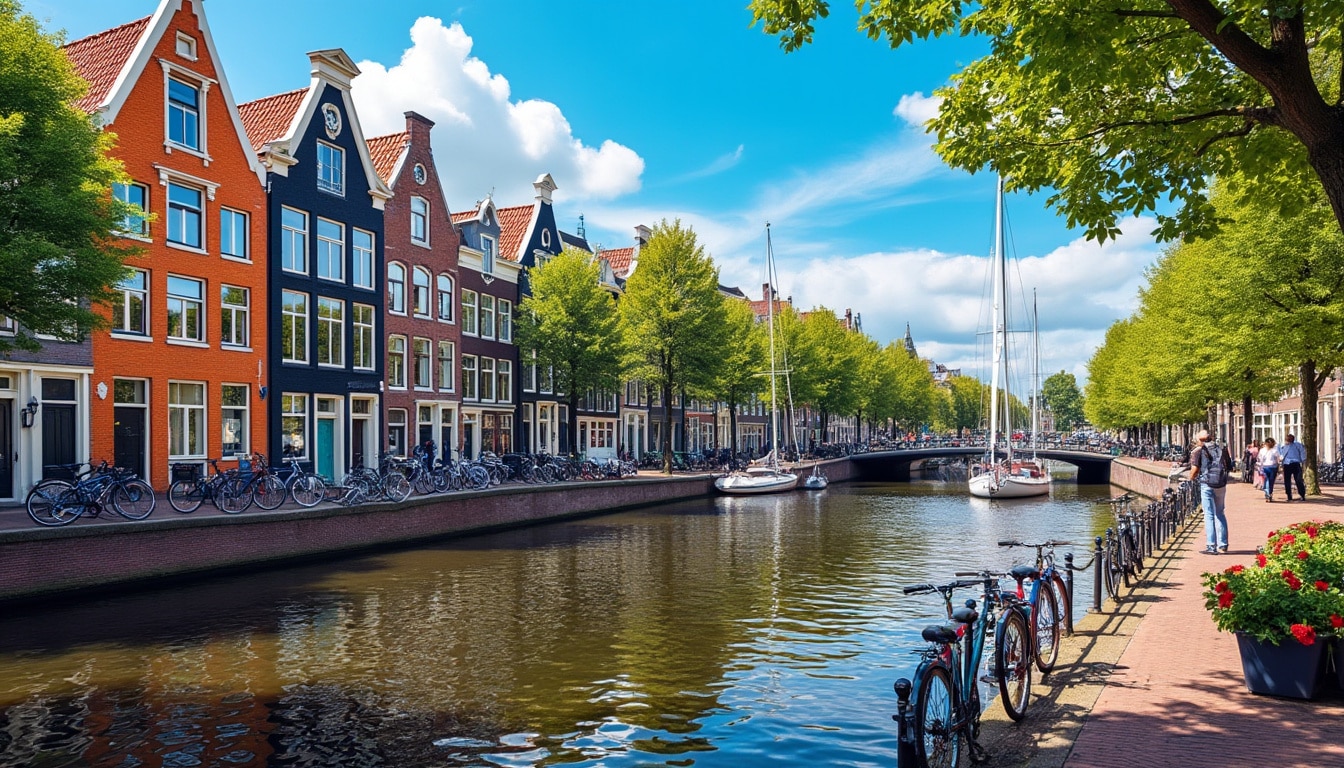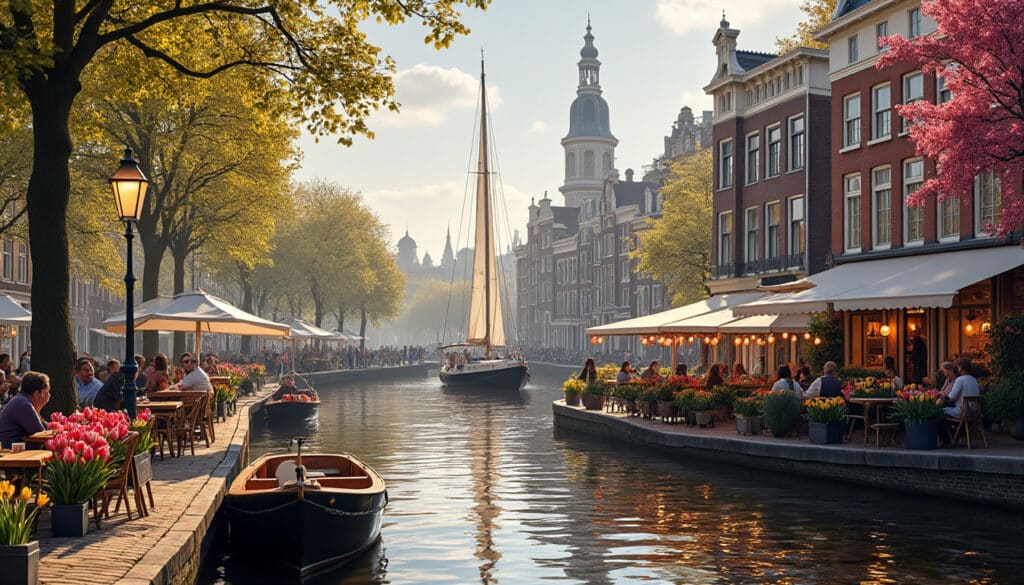Amsterdam, a city renowned for its intricate network of canals and historical charm, is also a hub of architectural brilliance. From its iconic canal houses to modern marvels, the city’s architectural landscape offers a delightful exploration for design enthusiasts. As one meanders through Amsterdam’s streets, the fusion of history and contemporary design is evident, promising a visual feast and a journey through time.
Exploring Amsterdam’s Iconic Canal Houses and Bridges
Amsterdam’s canal belt, recognized as a UNESCO World Heritage site, is home to some of the most charming and historic canal houses in the world. These luxurious homes, originally built in the 17th century, were once the residences of wealthy merchants who made their fortunes during the Dutch Golden Age. Walking along the famous Herengracht, Keizersgracht, and Prinsengracht, or cruising by boat, you’ll be captivated by the ornate facades and gabled roofs that characterize these picturesque structures.
Many canal houses have been repurposed into museums, such as FOAM, Huis Marseille, and the Museum van Loon. These offer not only a glimpse into Amsterdam’s artistic heritage but also the opportunity to explore hidden gardens that provide tranquil retreats amidst the bustling city. An engaging way to dive deeper into the architectural details and history is to visit these museums with the I Amsterdam City Card, which grants free access to many cultural sites.
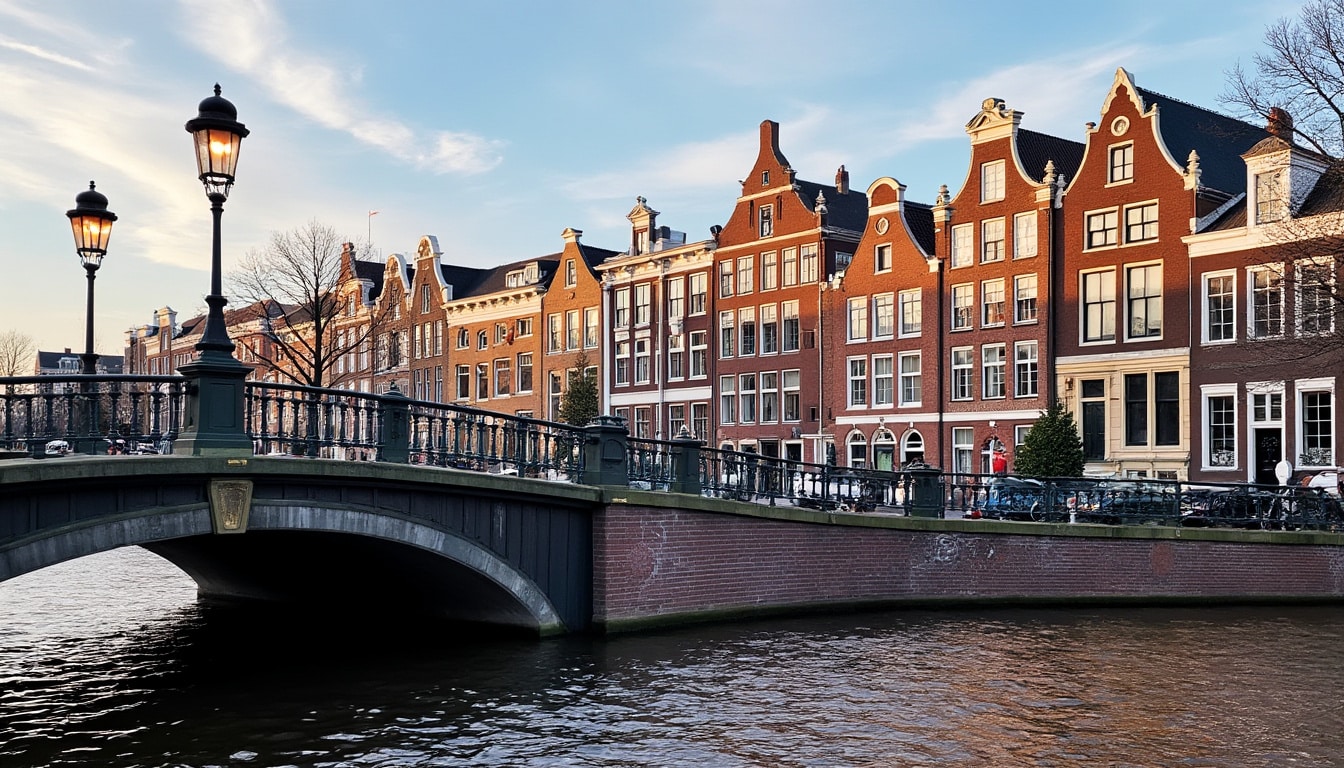
Bridges are equally integral to Amsterdam’s architectural allure. Boasting over 1,200 bridges, the city features some striking examples of bridge engineering. The oldest, Torensluis, dates back to 1648, while the Python Bridge in Eastern Docklands is a modern icon, with its red undulating form creating a unique visual spectacle. These bridges not only serve as functional crossings but also as backdrops for some of the most romantic views in the city, particularly the Magere Brug (Skinny Bridge) and The Seven Bridges view.
| Feature | Notable Example | Architect/Designer |
|---|---|---|
| Canal Houses | Museum van Loon | N/A |
| Bridge | Python Bridge | West 8 |
The Historical Legacy of Canal Houses
Canal houses are more than just architectural beauties; they are testaments to Amsterdam’s rich historical legacy. Originally, they served as both residences and warehouses, reflecting the prosperous maritime trade that shaped the city’s development. Their narrow and deep layout was a response to the city’s unique landscape and the taxation policy based on the facade width. This resulted in the characteristic tall, narrow buildings that often appear to lean forward slightly.
The Amsterdam School: A Bold Architectural Movement
The early 20th century saw the emergence of the Amsterdam School, a unique architectural style that left a lasting imprint on the city. Characterized by expressive and sculptural forms, this style integrates elements of Art Nouveau, Art Deco, and Jugendstil, emphasizing both decorative and ornamental features. The Amsterdam School was not just about aesthetics; it embodied the socialist ideals of its founders, addressing housing needs in rapidly growing urban areas.
Some of the most notable examples include the Het Schip museum, designed by Michel de Klerk, and Het Sieraad, also known as “The Jewel.” These buildings exemplify the use of unconventional materials, intricate brickwork, and a focus on both interior and exterior design. The Amsterdam School style was not confined to residential buildings; it extended to government institutions and schools, showcasing the city’s commitment to integrating artistic expression with functional design.
- 🏢 Het Schip: A museum that epitomizes the Amsterdam School style with its curvilinear forms.
- 🏫 Het Sieraad: Known for its elegant design and ornamental brickwork.
- 🏤 Batavierstraat Complex: An example of socialist housing projects from the period.
| Building | Design Features | Architect/Designer |
|---|---|---|
| Het Schip | Curvilinear Forms | Michel de Klerk |
| Het Sieraad | Ornamental Brickwork | N/A |
Preserving Cultural Heritage
Today, many Amsterdam School buildings are protected as part of the city’s cultural heritage. This preservation ensures that these architectural treasures continue to be appreciated by future generations, not just as part of the city’s history but also as sources of inspiration for modern architects. This movement’s emphasis on craftsmanship and social consciousness remains relevant, influencing contemporary architectural practices worldwide.
Modern Marvels: Contemporary Architecture in Amsterdam
While Amsterdam cherishes its historical architecture, it is also home to cutting-edge contemporary designs that push the boundaries of architectural innovation. Key contributors to this architectural renaissance include renowned firms such as MVRDV, OMA (Office for Metropolitan Architecture), and Zaha Hadid Architects, who have introduced futuristic elements into the city’s urban fabric.
A spectacular example of modern architecture in the city is the Eye Filmmuseum, with its dynamic, angular design overlooking the IJ River. Designed by Delugan Meissl Associated Architects, the museum is a landmark of contemporary elegance, juxtaposed against the historical skyline. Similarly, the NEMO Science Museum, designed by renowned Italian architect Renzo Piano, rises majestically from the waterfront, its ship-like structure engaging visitors in both its form and function.
- 🎥 Eye Filmmuseum: Known for its angular, cutting-edge design.
- 🚢 NEMO Science Museum: Resembles a ship, a testament to Renzo Piano’s visionary architecture.
- 🏨 Pontsteiger: Offers sprawling views and stands out with its unique architectural form.
Architectural Innovation and Urban Design
Amsterdam’s business district, Zuidas, emerges as a hub of contemporary architecture. Here, skyscrapers such as The Rock and The RAI Car Park highlight the bold vision of architects like Fokkema & Partners and Benthem Crouwel Architects. These structures not only serve practical purposes but also redefine urban landscapes through their innovative designs.
| Modern Structure | Architect | Key Feature |
|---|---|---|
| Eye Filmmuseum | Delugan Meissl Associated Architects | Angular Design |
| NEMO Science Museum | Renzo Piano | Ship-Like Structure |
Adaptive Reuse: Transforming Amsterdam’s Urban Landscape
In Amsterdam, adaptive reuse is a testament to the city’s commitment to sustainability and innovation. Repurposing old buildings to serve new functions is a sustainable practice that enriches urban landscapes while preserving historical integrity. The NDSM Wharf, once a bustling shipyard, is now a vibrant cultural hotspot with hip eateries and creative spaces, exemplifying adaptive reuse.
Another notable example is De Hallen, a former tram depot now transformed into a cultural complex housing a hotel, cinema, and various eateries. This transformation not only revitalizes urban spaces but also engages the community by offering diverse cultural experiences. Similarly, the former bridge houses, creatively turned into hotel suites, epitomize how old infrastructure can gain new life and purpose.
- 🎨 De Hallen: Cultural hub revitalized from a tram depot.
- 🥘 NDSM Wharf: From shipyard to a bustling creative space.
- 🏨 Bridge Houses: Imaginatively transformed into unique hotel accommodations.
| Repurposed Site | New Function | Architectural Significance |
|---|---|---|
| NDSM Wharf | Cultural Space | Adaptive Reuse of Shipyard |
| De Hallen | Cultural Complex | Transformation of Tram Depot |
Futuristic Visions: The New Frontiers of Amsterdam’s Architecture
Looking towards the future, Amsterdam continues to be a playground for innovative architectural endeavors. Influential firms like BIG (Bjarke Ingels Group) and KCAP Architects&Planners are at the forefront, crafting sustainable and visionary designs that anticipate urban needs of tomorrow. Projects like the Silodam by MVRDV highlight how Amsterdam embraces contemporary aesthetics while respecting its rich heritage.
The Silodam, with its unique use of space and materials, illustrates how futuristic architecture can blend seamlessly with Amsterdam’s existing urban landscape. This building integrates multiple housing types, offering diversity and community engagement within a single structure. At the same time, the city’s infrastructure is continuously evolving, adapting to incorporate sustainable technologies and design principles that will guide future developments.
- 🌆 Silodam: A modern interpretation of urban living spaces.
- 🌍 Innovative Sustainability: Futuristic projects encompass green technologies.
- 🏙️ Mixed-Use Developments: Integrating residential, commercial, and leisure spaces.
The future of Amsterdam’s architecture is steeped in a commitment to sustainability and creativity, ensuring the city remains a leading global destination for architectural excellence.
FAQs
- What is the Amsterdam School of architecture?
It’s an influential style from the early 20th century known for its expressive forms and unique aesthetics. - How do I explore Amsterdam’s canal houses?
You can visit several preserved houses that are now museums with the I Amsterdam City Card for free access. - Which modern architectures should I visit in Amsterdam?
Definitely check out the Eye Filmmuseum and the NEMO Science Museum for stunning contemporary designs.
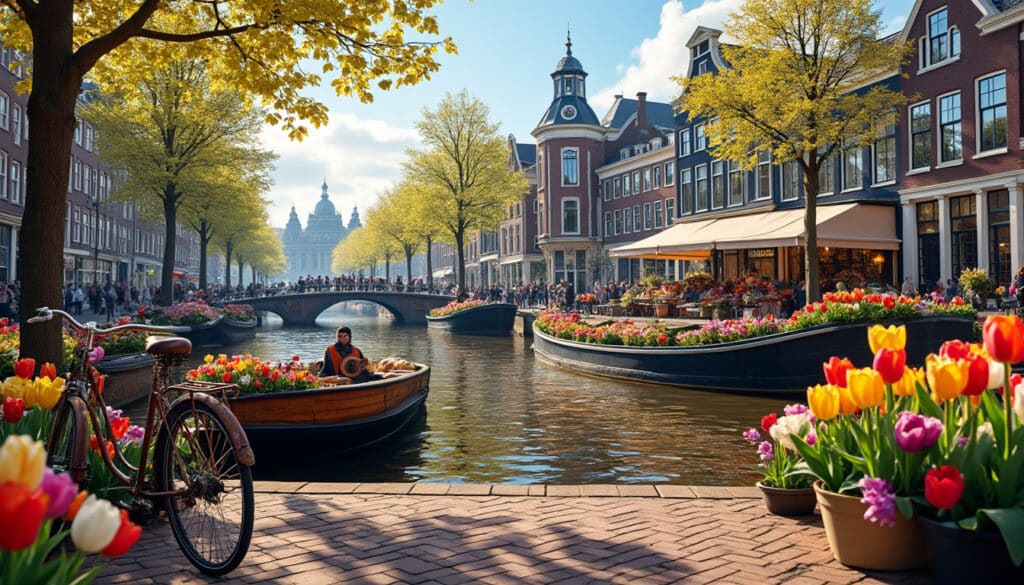
Fun Facts & Curiosities About Amsterdam
Amsterdam, the vibrant capital of the Netherlands, is a city that never ceases to amaze. Known for its serene canals, world-renowned art museums, and rich history, it’s no wonder that this ‘Venice of the North’ attracts over 20 million visitors…

Amsterdam, the capital city of the Netherlands, is a fascinating fusion of history, culture, and modernity. From its iconic canals to its vibrant museums, this city is filled with intriguing facts and stories that captivate the curiosity of visitors from…
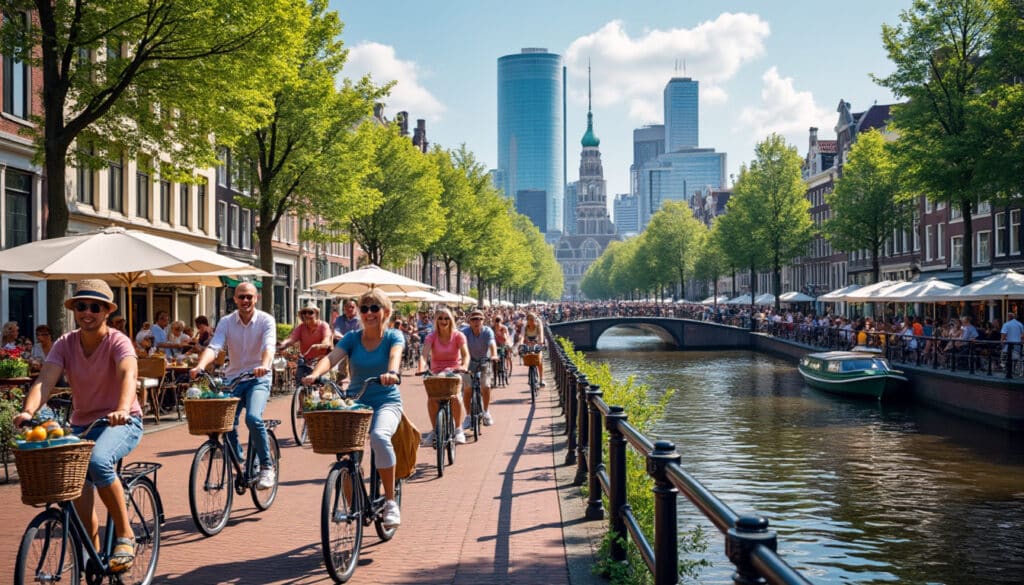
Demographics and geography of Amsterdam
Amsterdam, a city renowned for its intricate canal systems, historic landmarks, and vibrant culture, is a place that offers a captivating blend of the old and the new. Known formally as the capital of the Netherlands, it stands as a…
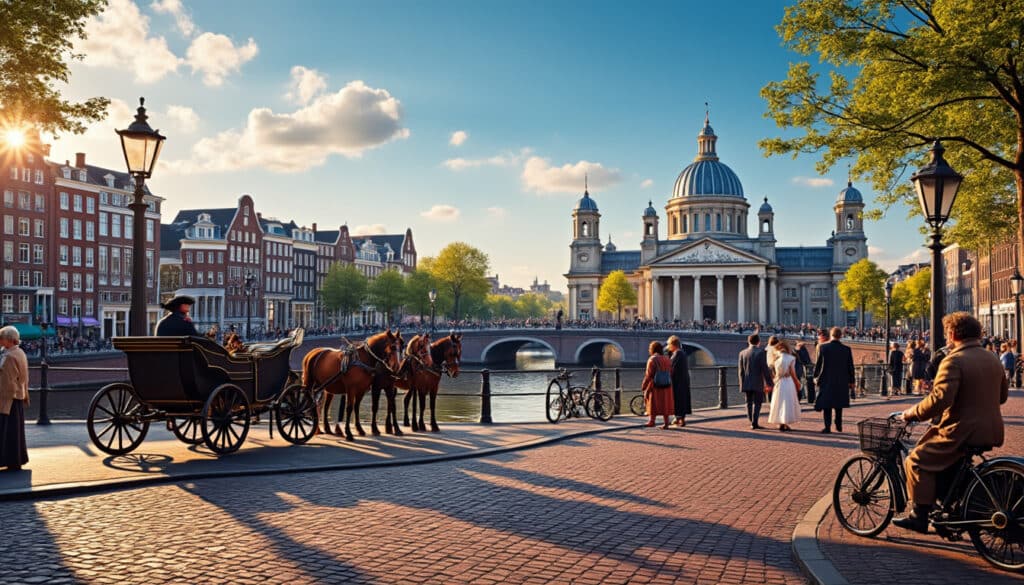
✨ Amsterdam, a city intertwined with canals, art, and remarkable history, stands as a beacon of culture and innovation. Known as the “Venice of the North,” this Dutch jewel brims with rich tales waiting to be explored. Its transformation from…
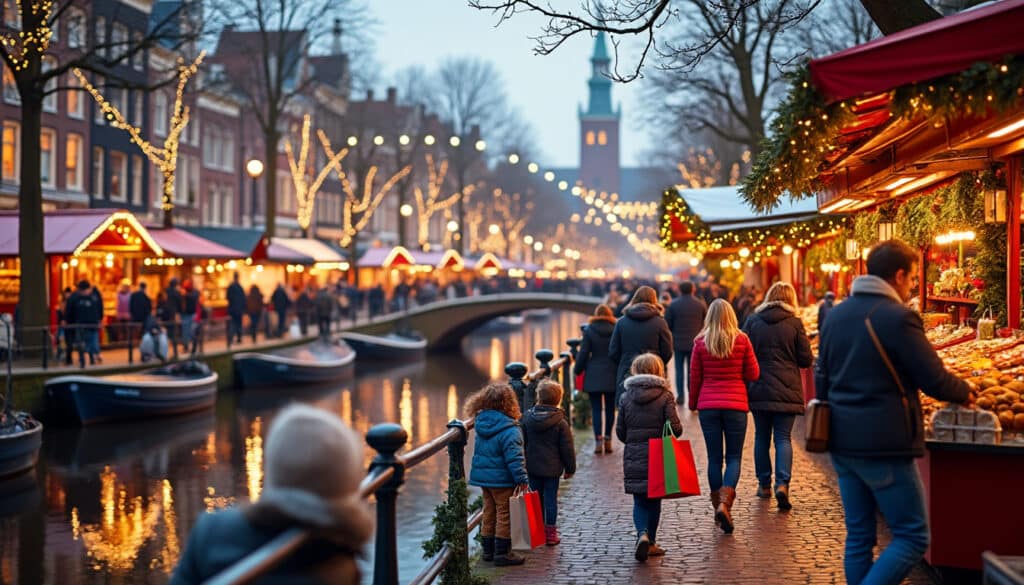
Holidays and celebrations in Amsterdam
Amsterdam, a city with a rich tapestry of history and modern culture, transforms itself through its myriad of festivals and celebrations throughout the year. As each season unfolds, the city reveals a unique character, inviting locals and visitors alike to…
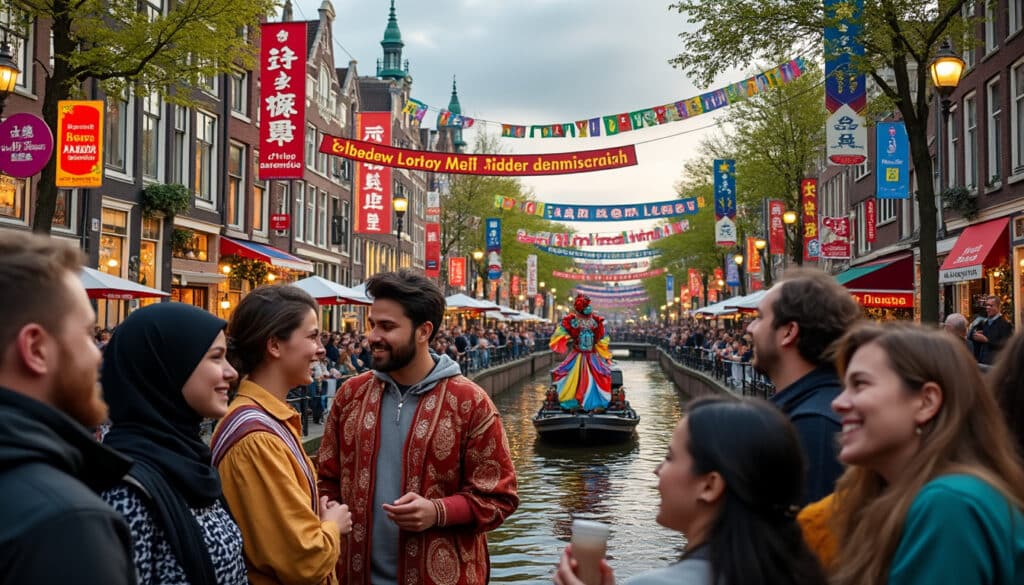
Language and spelling of Amsterdam
Amsterdam, with its historic canals, vibrant culture, and diverse demographics, thrives in its unique linguistic landscape. 🇳🇱 The official language is Dutch, a symbol of the city’s deep roots and rich heritage. Yet, this dynamic metropolis stands out for its…
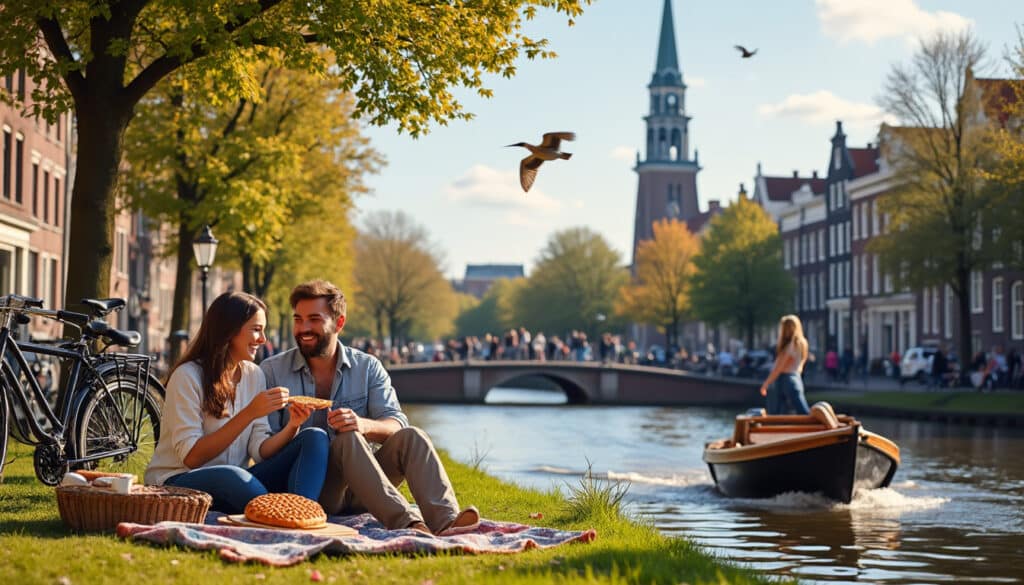
Local tips for tourists in Amsterdam
Amsterdam is a city brimming with historical charm, vibrant culture, and unique experiences that attract millions of visitors each year. While many tourists flock to the typical hotspots, there’s a wealth of hidden gems and local secrets waiting to be…
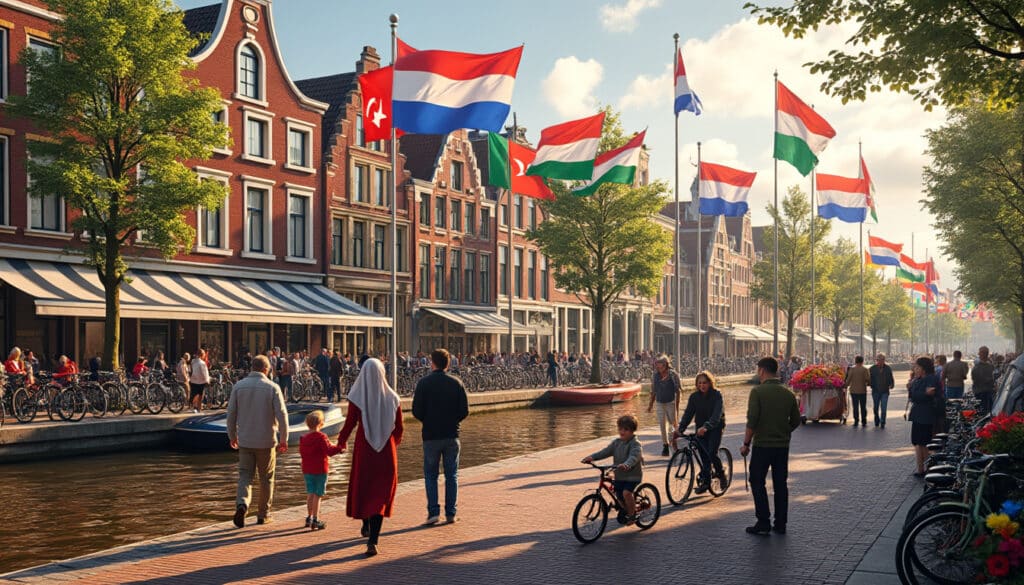
Names, flags, and identity of Amsterdam
The vibrant city of Amsterdam, with its rich tapestry of history and culture, showcases its identity in manifold ways. Beyond its iconic canals and architecture, the names and symbols, such as flags and coats of arms, deeply root its unique…
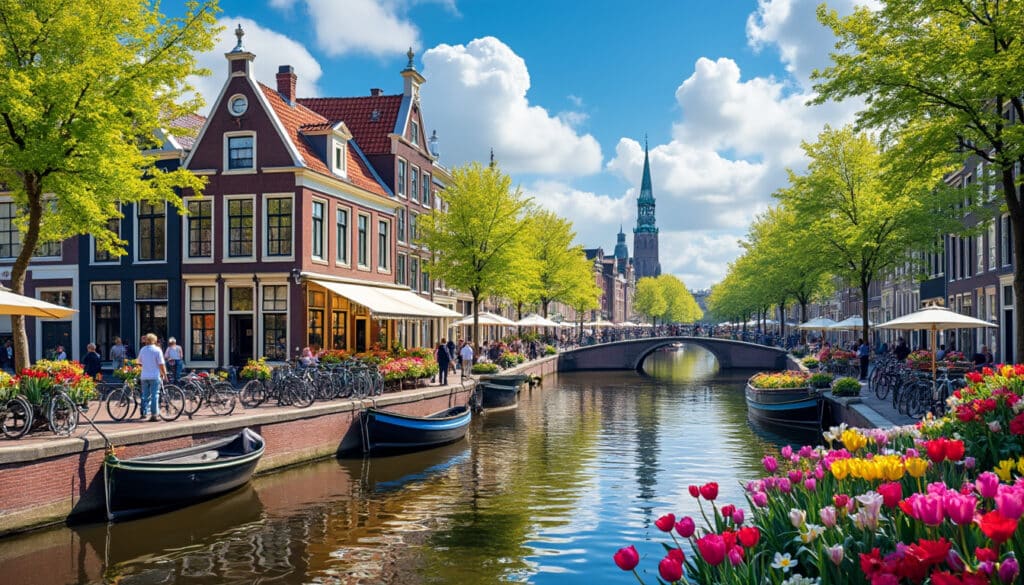
Reputation and identity of Amsterdam
A city of canals, history, culture, and innovation, Amsterdam has always been a significant player on the global stage. Known for its liberal ethos and iconic landmarks like the Van Gogh Museum and the Rijksmuseum, this Dutch capital has cultivated…
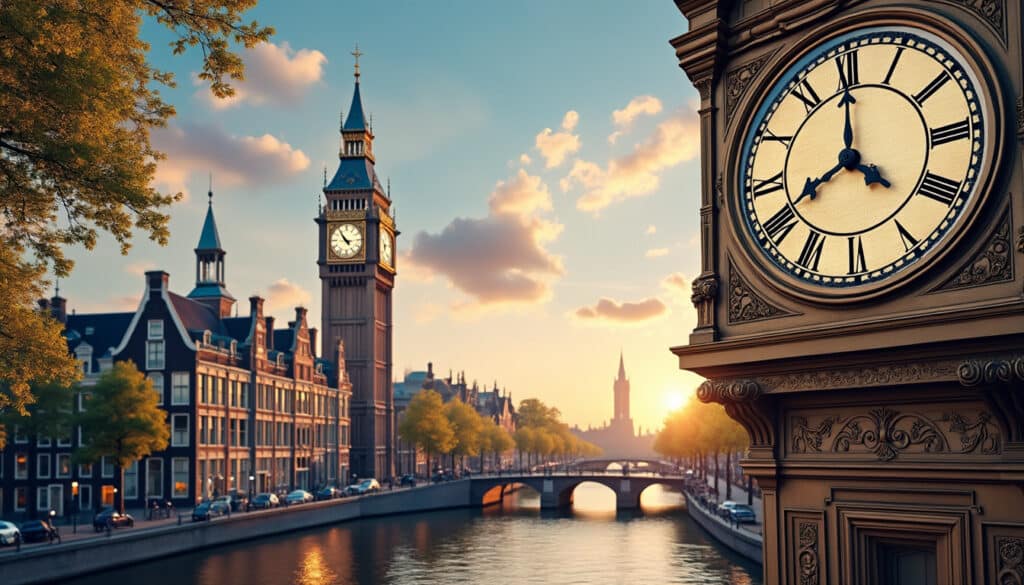
Time and time zone in Amsterdam
In a city as vibrant and multifaceted as Amsterdam, understanding the intricacies of time and time zone is crucial for both residents and visitors alike. From the precision of Amsterdam Clocks to the seasonal shifts in Daylight Saving Time, every…
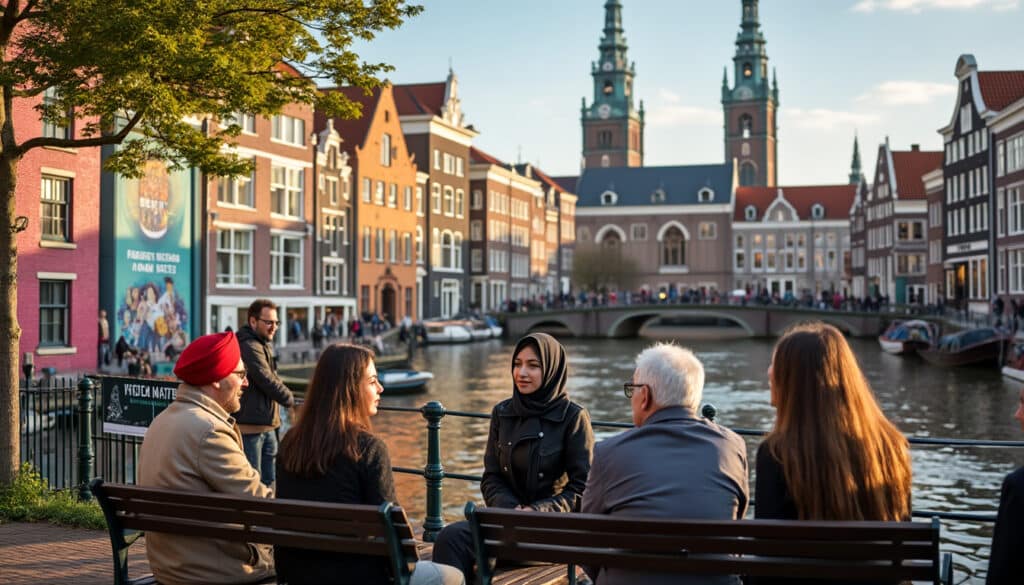
Unusual facts and social issues in Amsterdam
Amsterdam, often celebrated for its charming canals and vibrant culture, offers a blend of historical depth and modern vibrancy. Yet, beneath its picturesque exterior lies a tapestry of unusual facts and pressing social issues that often go unnoticed. From its…

What does Amsterdam look, smell, feel like?
Embark on an immersive journey through the sensory tapestry that is Amsterdam, a city where sight, smell, and touch blend to create an experience both unique and familiar. As bicycles gracefully weave through the cobblestone streets, the unforgiving wind dances…

